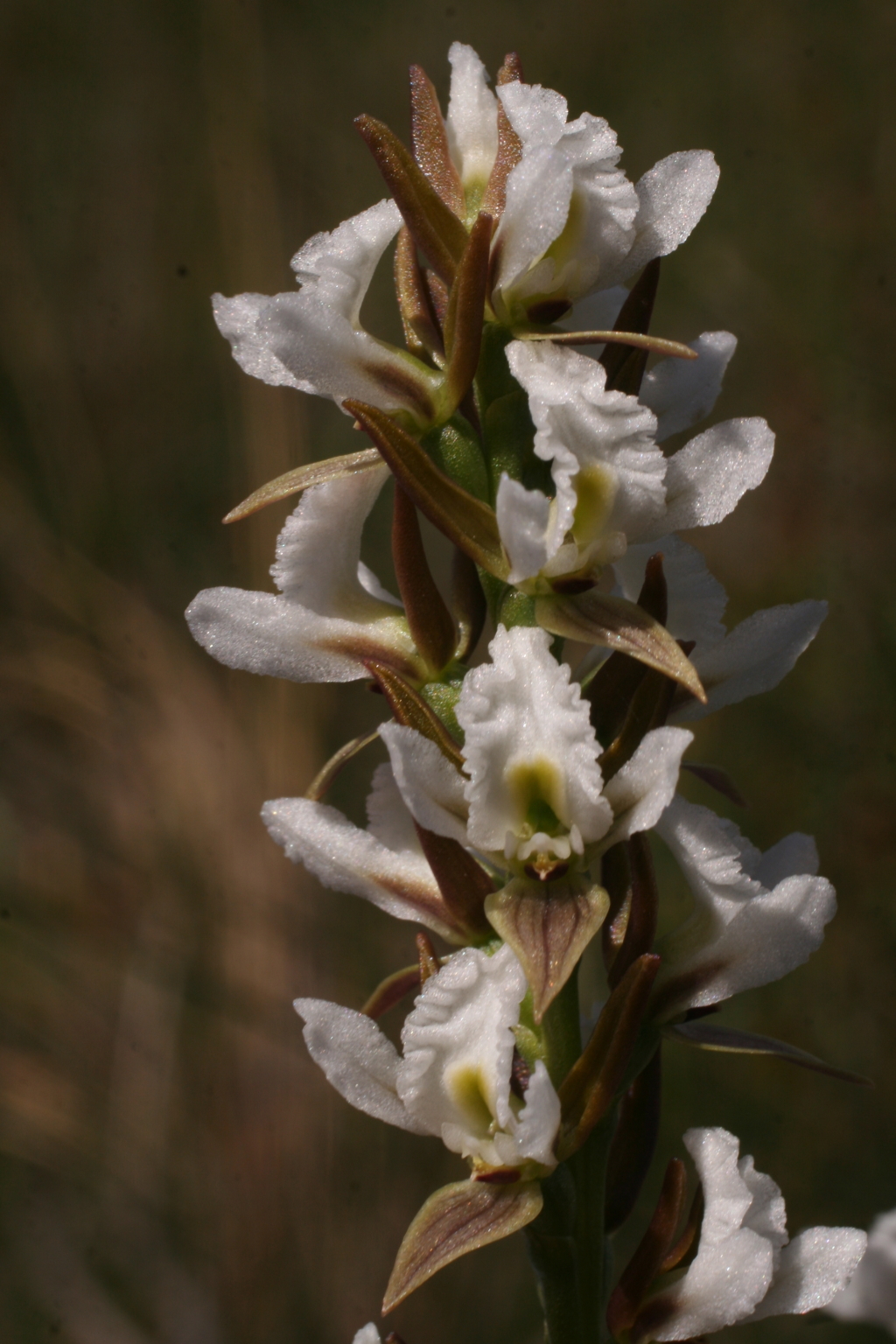Prasophyllum
Glabrous herbs arising annually from ovoid tubers. Leaf solitary, terete, elongate, usually green, often purplish at base, free distal portion (blade) often withered at flowering. Inflorescence a narrow raceme or spike, stem partly enclosed by the hollow leaf. Flowers often numerous, labellum uppermost, sub-sessile, each subtended by a clasping bract, not brightly coloured, small, often sweetly fragrant; ovary ovoid to sub-cylindric; dorsal sepal ovate, lateral sepals lanceolate, erect, free or often joined for part of their length; petals usually horizontal, linear-lanceolate. Labellum sessile or on an immobile claw, usually recurved near middle, oblong to trullate, often contrasting in colour from the sepals and petals; callus a simple longitudinal shiny plate; nectary present but indistinct. Column sessile, anther and stigmatic plate arising separately from the base, lateral appendages fused to stigmatic plate, upper part of stigma (rostellum) distinct and higher than anther, rostellum notched, a small viscid disk situated in the notch and attached to pollen mass by a thread of tissue (hamulus).
Estimated to be over 140 species (many undescribed), mostly endemic to southern Australia, with at least 2 species in New Zealand; about 54 species occur in Victoria.
Pollinated by nectar-seeking insects, principally wasps and native bees. Some species apparently producing seed without fertilization.
Flowering in many species is enhanced by summer fires.
Bates, R.J. (1994). Prasophyllum. In: Walsh, N.G.; Entwisle, T.J., Flora of Victoria Vol. 2, Ferns and Allied Plants, Conifers and Monocotyledons, pp. 869–886. Inkata Press, Melbourne.
 Spinning
Spinning



